If you have not read my first blog on our trip to Nepal with Gate 1, click on this link :
http://dinastravels.blogspot.com/2018/04/a-taste-of-nepal-part-1.html
or copy it and post it in your prowser.
On Wednesday, our last full day in Nepal, we started at Swayambunath, which is nicknamed the Monkey Temple Stupa. A stupa is a Buddhist shrine usually built to commemorate certain events in Buddha’s life, to keep important sacred relics, and for burying the remains of monks and other saintly personalities related to Buddhism. The construction of stupas dates back to the 2nd or 3rd century when they were mainly mounds of earth used for burying the Buddha. Stupas are highly symbolic. The five levels represent the four elements and eternal space. The square base symbolizes earth, the dome is water, the spire is fire and top space. The stupa as a whole can be seen to represent the Buddha, with the base being his seat and the dome his body.
The Swayambunath legend is that it was self-created out of a lake. This stupa is a very sacred site for the Newali people and the second most holy stupa for Tibetan followers of Buddhism, second only to the massive Boudhanath, less than seven miles away on the outskirts of Kathmandu, which we saw later in the day. In the 2015 Earthquake, Boudha was severely damage and the whole structure above the dome had to be removed for reconstruction.
The Monkey Temple stupa was built in the 1400 or 1500s and restored several times, the last renovation being in 2010. The main stupa was not damaged in 2015 but the Newari temples around it were damaged. It is nicknamed the Monkey temple because so many rhesus macaque monkeys make the northwest parts of the temple area their home.
They are considered holy.
Legend has it that when Manjushri, a wise man who could have reached Nirvana but did not do so in order to stay and help others, let his hair grow long and head lice were attracted to it. They cleaned his long hair and then transformed into monkeys, so monkeys have a home at this stupa.
We were told not to take water bottles with us from the bus as the monkeys like to grab them and can get a bit aggressive. They especially like Coca Cola. Below they are gathering around some spilled soda.
A monkey trying to open a Coke bottle.

And then carrying it off.
There are a number of smaller stupas at this shrine leading up to the largest one, at an altitude of 5,200 feet above sea level.
Notice the small statues of Buddhas in areas in the lower part of the stupa.
There were lots of prayer flags hanging above.
They are rectangular cloth pieces in five colors with writing to bless the surrounding area. The colors represent basic elements of the world: Yellow for earth, green for water, blue for sky, white for air, and red for fire.
They are used traditionally to promote peace, compassion, strength and wisdom.
From Wikipedia, "The flags do not carry prayers to gods, which is a common misconception; rather, the Tibetans believe the prayers and mantras will be blown by the wind to spread good will and compassion into all pervading space. Therefore, prayer flags are thought to bring benefit to all."
Prayer flags were sold in rolls at the top.
This site nicely explains the different parts of the stupa. Our guide mentioned that some people thought the nose on the stupa (that looks like a question mark to Westerners) represented questioning life or the world, but it actually is the Nepali language way of writing the number one and represents unity and one way of reaching Nirvana.
At the top of each of the four sides of the stupa are the all-seeing eyes of Buddha. Some feel like the eyes are looking directly at the observer as s/he moves!
The dome at the top of the hill was stunning and took our breath away.
On one path, people climb 365 steps to get to the biggest stupa. We went up the gentler way. Below is a picture of me at the top of the staircase that we did not climb! Actually, I think a number of us could have done.
Workers pictured below are near the highest stupa, working on restorations.
Views of Kathmandu from the top:
In front of the stupas are Vajras or thunderbolts.
Details under another Varja
At the top were also prayer wheels. People walked clockwise and spun the cylindrical wheels.
Prayer chants said while spinning the wheels include: "Please god, make me the Jewel (spiritually) on top of the lotus flower. Ignorance, angel and greed lead us to suffering."
At the bottom of this shrine area, people threw coins into the pot in front of the Buddha structure. A world peace bell is also visible.
There was a small museum with these two statues.near the highest stupa.
From there, we went on to the city cremation site on the banks of the Bagmati River.
As we walked from the bus, we saw these along the way:
Natural colors used to paint elephants or maybe for the Hindu holiday Holi?
Nepalese puppets
The cremation site is part of the huge Pashupatinath Temple complex, the holiest Hindu temple in Nepal and a World Heritage site. Only Hindus may enter the Temple itself. Although we were scheduled to see this amazing complex, I think because of the religious events going on, we only went to the cremation site. Cremation is a fascinating aspect of Nepali and Indian culture, but it was a bit difficult for some of us to watch for more than a few minutes.
We were not sure of what the man was doing in the second photo below.
Cattle also rested in the area.
There are up to 20 cremations a day at this site. The ashes are mixed with earth and then thrown into the river, creating a mix of air, water and soil with the ashes. Most cremations are held during the day so more can attend. The site is open 24 hours a day with 500 kg of wood needed. A cremation takes two to three hours. Forty percent of Nepal is forest so there is no wood problem for cremations.
As we drove to our next stop, our guide told us more about the country.
Soccer is the most popular sport in Nepal.
Because of the sunshine, solar water heaters are used in the cities. People in rural areas are given solar stoves, which are only usable during the day.
Anita also told us about the custom of Chhaupadi or menstrual purity and isolation , which is still practiced, especially in the conservatively religious rural areas. Menstruating girls are isolated from family members and stay in a small hut for up to seven days. They cannot cook for others or go to religious events. Other women drop them off meals outside the hut. During cold weather, several girls tried to stay warm by making fires in the hut and died from smoke inhalation. This custom was outlawed by the the Nepalese government in 2005 but the custom dies hard in rural areas. Anita told us that even in cities, many girls do not cook and do not attend public events at this time, but they do live at home. Anita said that sometimes it was nice at a teen growing up when she was freed from the obligation of cooking for the family!
Anita also told us about the custom of Chhaupadi or menstrual purity and isolation , which is still practiced, especially in the conservatively religious rural areas. Menstruating girls are isolated from family members and stay in a small hut for up to seven days. They cannot cook for others or go to religious events. Other women drop them off meals outside the hut. During cold weather, several girls tried to stay warm by making fires in the hut and died from smoke inhalation. This custom was outlawed by the the Nepalese government in 2005 but the custom dies hard in rural areas. Anita told us that even in cities, many girls do not cook and do not attend public events at this time, but they do live at home. Anita said that sometimes it was nice at a teen growing up when she was freed from the obligation of cooking for the family!
There are two kinds of monks in Nepal. Ones that are monks until the age of 18 and those from 18 on for life. The latter are celebate and wear maroon colored robes. In the past, people sent their second son or first daughter to be monks or nuns, but now families are smaller so this custom is less common though people are still very religious. Forty percent of children in monastaries now are orphans.
We headed to Boudhanath or Boudha, the largest stupa in Nepal and one of the largest in the world. It is in an area known as "little Tibet" as many Tibetan refugees fled here in the 1950s and have remained. This stupa was badly damaged by the 2015 earthquake and was restored mostly by private funds and labor by Nawari people, with 500 to a thousand volunteering daily to complete the restoration. The work began 9 days after the earthquake on May 24, 2015 and finished on November 15, 2016.
It was hard to take a picture of the whole stupa as it dominated the entire enclosed site. It was also somewhat cloudy when we arrived and later in the afternoon with shadows.
There are different views of when this stupa was constructed, but for sure it was some time between 600 and 800 CE (AD). The stupa is about 36 meters tall (about 120 feet), and near the top above the head, are a series of thirteen steps above which is an umbrella and the pinnacle.
Statues of young men on elephants guarding the stupa.
This stupa was on the ancient trade route from Tibet, so Tibetan merchants rested here along their journeys for many centuries.
Smaller structures and stupas around the big stupa.
 |
| A peace bell |
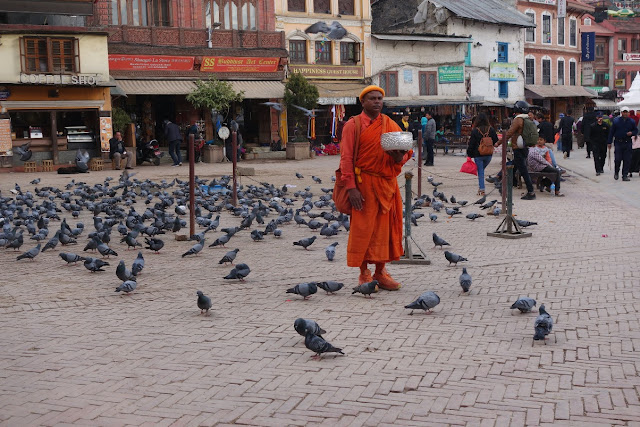 |
| A monk collecting alms among the pigeons |
We watched mandalas being made. The artist below was a master teacher. It took him 5 years to get from a student to an intermediate student and a total of ten years to become a master teacher.
The mandalas were painted on cotton canvas. Then white clay is applied to the canvas and glue from yak skin is applied over it so that the canvas is non-porous once it dries in the sun. Then the canvas is tied to a frame.
Detailed plans go into each picture. Precise measurements are taken and sketches are made. Mineral colors are mixed with yak glue for this delicate painting. The finishing of the most intricate mandalas are done in 24 carat gold and can only be done by master painters. The work is arduous and by a certain age, the master teachers no longer apply the 24 carat gold paint.
Below a student is working on a simpler design.
A wall hanging worth reading--I may print a copy and put it up on my wall as a reminder!
A close up of a framed mandala that was passed around. We were asked not to take pictures of other mandalas as each design is special and they do not want it copied.
The Dali Lama once visited this store and made a mandala with his students.
There is a shrine in the school to commemorate the Dali Lama's visit.
Here is the mandala the Dali Lama and his students made at the store. It is on a table under a glass cover. Amazingly, it was barely damaged during the 2015 earthquake. If you look carefully, you can see some of the damage in the blue and white circle, especially the bottom half.
Usually when Lamas make mandalas, they are then destroyed to show that nothing is permanent. But because this one was not made for religious purposes, it is still in the store as an inspiration and model to the students. This Huffington post article does an excellent job explaining the purpose of mandalas, how they are painstakingly made and why they are destroyed.
Here are some framed mandala painting for sale in the window of a shop.
Here are some people pictures I took between the stores and the stupa.
Below is a woman in a typical Tibetan head covering
and another in typical Tibetan dress under her coat checking out flowers for sale in front of a building.
Monks as tourists?
Birds waiting to be fed.
That night we had a group dinner at a fancy restaurant and celebrated Nava and Ian's birthdays on February 14.
 |
| The fish main dish |
 |
| The beef steak main dish |
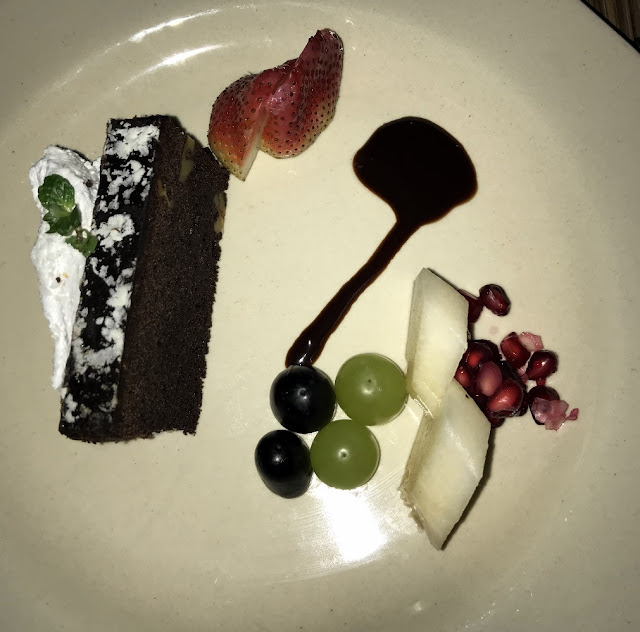 |
| A dessert |
 |
| Nava in her new top enjoying her meal |
 |
| The restaurant |
We found out from Anita that two supermarkets were near our Kathmandu hotel, so I went to both to explore as I really enjoy doing so in countries I visit. Nava and I walked to the slightly smaller one, Bhat-Bhateni, early that morning before going to the stupas..
It opened in 1984 as a tiny 120 square foot store and has become the leading supermarket and department store chain in Nepal, with more than 50,000 customers daily and 14 stores in central Kathmandu, Lalipur (the modern name for Patan), Pokhara, Chitwan, Dharam, and Butway. Since a lot of tourists visit the area, signs are also in English.
Men tossing boxes from a delivery truck to the store entrance.
Below are shelves of spices
And a fascinating line of tea, written in Nepali on one side and English on the other
I noticed an array of gluten-free products including cookies and boxed soy milk.
Since it was February 14, they also had freshly baked Valentine's Day cakes!
A lot of dried fruit including dyed dried pomelo. I decided not to try it. it was 220 rupes for the package, or about US$2.20. I would assume it was mainly for tourists and other travelers.
A lot of fresh vegetables including this one, whose name I have since forgotten.
Dragon fruit below:
Below I am in front of the delivery truck. Orders can also be made online!
Outside the store in the mini-shopping area we saw an advertisement for Tuborg beer, featuring the star of the Ballywood movie we watched.
On the way back to our hotel, we saw a lot of men in line. We found out that they were probably waiting for their bank to open.
The next morning while waiting for the travelers who took the optional flyover to the Himalayas, Arlene and I walked to the other supermarket that she had visited with Kusuma the day before. I didn't take a camera so have no pictures. It was in a more nondescript neighborhood close to the US Embassy and had similar products but not necessarily the same ones. It also had a huge non-food section. It was fun to compare the two!
That morning, about half the group went on the flight over the Himalayas. They got up early but had to wait and hour or two at the airport for the clouds to clear but then got spectacular views of the Himalayas. Karen shared this photo with us. I think that is Everest in the center background.
I forgot to mention in part 1 on Nepal that there are over 1,300 Himalayan mountain peaks which are more than 18,000 feet or 5,486 meters high!! Only 326 of them are open and have been explored. There are eight mountains in Nepal which are more than 8,000 meters (26,247 feet) above sea level. Mt. Everest is totally commercialized. Its most common Tibetan name is Chomolunga which means "Goddess Mother of the World" or Goddess of the Valley." . The Sanskrit name is Sagarmatha meaning "Peak of Heaven." There is no skiing on the Himalayas because of altitude. The best time to climb Mt. Everest is the second week of April to the third week of May. It cost $25,000 for a group to climb. The price was reduced recently to $11,000 to encourage more to climb, but there is a concern about the increase in garbage. Since 1953, about 4,000 have registered and paid to to to the top. 250 people who paid this royalty fee have died during the climb. Many Sherpa also have climbed but they are not officially recorded as they do not pay the fee, and close to 300 have died. 25 were killed in an avalanche in 2002 and 19 in the earthquake in 2015. In 2014, 16 were killed in an avalanche at base camp. In order to climb, people must arrive 3 months in advance to acclimate, be excellent at rock climbing, and spend time at base camp 1 and 2, adjusting well to the altitude. This year, a lot of climbers were expected. For more information on climbing Mt. Everest, check out this blog, called Everest by the Numbers.
When the group got back, we all headed out for a tour of Patan, the third city in the Kathmandu valley and the most traditional. It lies on the south side of the Bagmati River, which separates it from the city of Kathmandu.
Patan is the ancient name for the city, and it also goes by the name Lalitpur. It is the third largest city in Nepal in population after Kathmandu and Pokhara (120 miles west of Kathmandu) with about 230,000 people in 2011. It's known for its rich and traditional cultural heritage. It probably was founded in the third century BCE. It is less urbanized than Kathmandu but has a lot of people working in traditional handicrafts and cottage industries. And many live here but work elsewhere in the Kathmandu valley, including our guide Anita.
We spent most of our time in Patan's Durbar Square, part of the World Heritage Site of the Kathmandu Valley. It is a very artistic city and most of the art work is dedicated to the gods so it is also a very religious city.
When we got off the bus, we saw a lot of wires twisted together. Anita told us they were for cable connections to the internet, TV and also for phones.
We had to walk a bit from the bus down narrow streets to get to Durbar Square. Motorcycles and bikes were the best form of transportation down the narrow streets.
Buffalo meat on display for sale on the street.
Seeing the motorcyclist go down the street makes really understand how narrow the streets are!
A dog guarding her cute pup on a doorstep.
At many intersections and along the way we saw shrines, like this one, where people could pray.
People left food for the gods at the entrance to their homes and also flowers and other decorations for the gods.
Entry to a small business with floral leis at the top frame of the door.
Below are used bricks to repair buildings damaged in the 2015 earthquake. There was a lot of damage in Patan.
A building being repaired
Passing several produce vendors on the street.
We first walked to the Golden Temple, a small temple which is actually a monastery. Anita said he building is the best example of Newali art. The Golden Temple is not Golden but got its name from the gilded metal plates on the frontage. The sign below was just past the entrance to the temple.
The main priest at the temple is a boy under eight who comes for one month. He gets a white outfit when he arrives and wears it the whole month. We saw his was rather dirty so he must have been there for close to a month. An assistant comes too who knows how to be a monk as the boy cannot learn these serious duties in time to do them for the mnth he is there. The child is usually from a well-to-do family, and the family donates a piece of art to the building after the child leaves.
Below is the boy's older "assistant." Behind him are prayer wheels.
When the child isn't fulfilling his official duties, he can play or do what he wants inside the temple grounds. Here it looks like he is playing a game on his mobile phone.
The temple is a great example of courtyard temple architecture.
Two elephant statues guard the doorway
The four corners of the courtyard have statues of four Lokeshvaras (incarnations of Avalokiteshvara, an early manifestation of Buddha) and four monkeys, which hold out jackfruit as an offering. Anita said these monkeys were a reminder of the monkeys who were with Buddha and bought him fruit when he was meditating.
A woman lighting candles, a common tradition across religions.
A small shrine inside the temple courtyard:
Pigeons also being fed at this temple.
A turtle pedestal holding up a statue of an elephant and his rider above it.
Below, one of the crafts shops specializing in metal statues.
We then entered the main part of Patan Durbar Square.
The temples were heavily damaged in the 1934 earthquake and many were damaged in this earthquake too. Anita said that the stone temple from the 16th century dedicated to Lord Krishna was not badly damaged but will not survive another earthquake.
The palace was damaged in 1934 and restored with the help of the Austrian government. Now part of it is a museum and we walked through it. The art work was astounding, including metal, stone, and wood.
Notice the animals that each statue below is standing/being transported on.
This ritual bath which was used by the royal family is part of a exquisite courtyard.
Close up of the statues around the bath.
Woodword around doors. We noticed aging on the wood work. The special kind of wood is harder than teak, so very hard to carve.
We noticed that most of us had to lower our head to go through doors. Entrances in Nawari homes are low, so that walkers much bend over with reverence.
To one side of this museum/palace is a workshop for repairing all the wood damaged from the earthquake. Below you can see a pile of wood from the earthquake which will be used in the repair work.
I was surprised to see a European working among them.
From there we had some free time to look around and some of us headed to the Fair trade store selling Pashima (cashmere--goat hair) scarves, etc. There was another Fair Trade store in town that the director of Fair Trade Judaica has done business with and I had hoped to go there, but it was too far away to get to on our tight schedule.
The workers are from villages and the members of the store go to the villages and check the work of the villagers. If it is not up to their quality, they do not buy it. As a result, the store may not always have the same merchandise. Here are some pictures of the villagers at work.
Nava and I bought some pashmina scarves and some part-pashmina scarves and I also bought two lovely pair of non-pashmina gloves.
Arlene, Chris, Karen, Kusuma, and Blanca went to an interesting explanation of singing bowls and then at least one of them bought one. These bowls were definitely authentic healing bowls and should fit over the recipient's head.
I had bought a cheap one in the outdoor market. I could get it to "sing" there but Nava could not. However, since coming back to the US, I have not been able to get it to sing, even by keeping my palm that held the bowl flat. Oh well....I will not give up yet! This store also sold the local stools used to sit on or as a small table. I really have been intrigued by them and wished I could take several home!
We had left the hotel with all of our luggage before setting out for Patan, so from this fascinating ancient city, we headed directly to the airport.
.
We had stunning views of the Himalayas on the way to Delhi. Thanks so much to Karen for taking pictures with my phone from her seat with the perfect view.
We arrived at our hotel near the Delhi airport, checked into our rooms and headed to the dining room for the most opulent buffet we had seen on our entire trip.
 |
| Puffed lotus seed--a very healthy food according to Bhanu |
We ate quickly, said quick goodbyes, headed to our rooms to sleep for 4 or 5 hours before our wake up call at 1:30 to get ready for our flights home. It was a hurried and somewhat unsatisfying way to say goodbye to our fellow travelers.
I'm glad that I have been able to share these blogs and travel experiences with them and have been very touched by their responses. We had an amazing trip and our travel companions made the trip more rewarding and enjoyable! I had not had travel to Nepal or India in my immediate plans until a close friend suggested that we go to Southern India and Sri Lanka with Road Scholar. It sounded fascinating, in part because I had wanted to learn more about the Cochin Jews' history. When that trip fell apart and Nava's travel partner to India had to drop out, I was lucky to be able to join this special trip with Gate 1 and 26 other travelers. We had no idea what to expect from this company and a larger traveler group, but all exceeded our expectations. But mostly, I learned how little I knew about India and how much more I want to learn!






















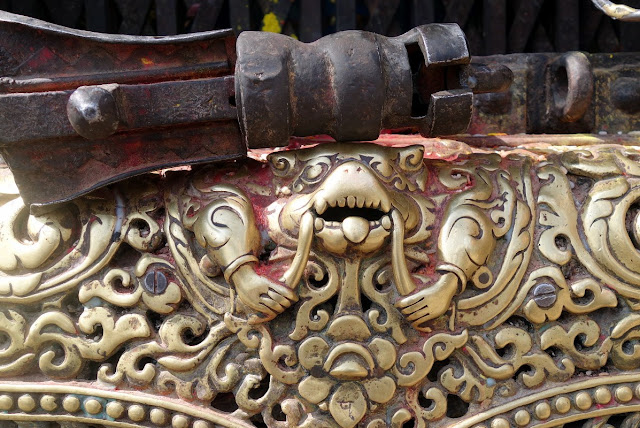









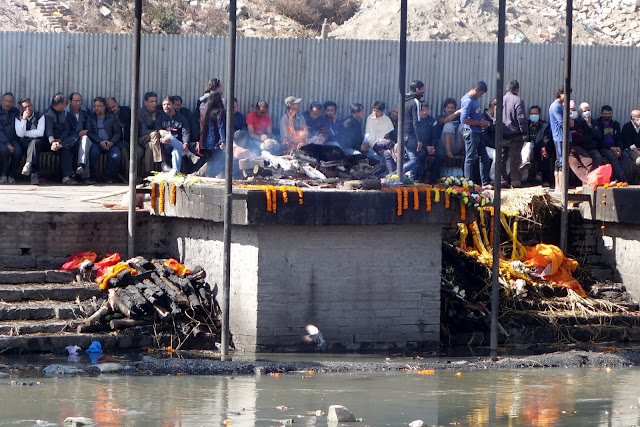















































































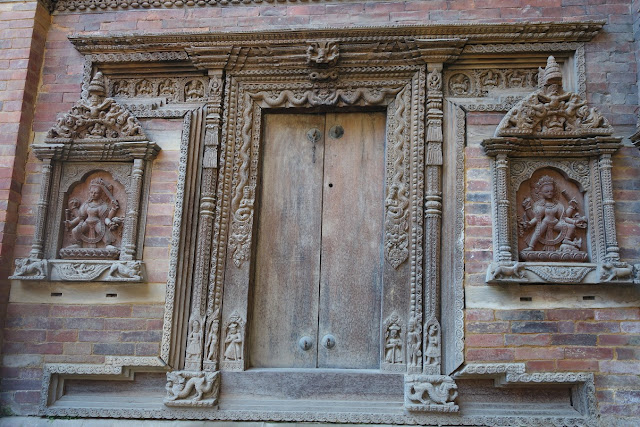






















9 comments:
Dina, thank you so much for putting together this beautiful post of our trip in Nepal. It will serve as a reminder to me of an amazing journey and mostly the nice memories with wonderful people such as yourself. 😘
Enjoyed reading both Nepal blogs. Learned a lot about the country. Glad to see all the rebuilding after the earthquake. Thank you for sharing.
Hello, Thanks for sharing such informative blog article with us in which you have shared authentic information about bhutan tours from India. Please
Namaste Dina
Thank you so much for sharing a beautiful article about Nepal. In my page can get idea of Wilderness Manaslu Trekking
Great Thanks for sharing this most informative post about Nepal
Thanks for sharing this important information with local and international communities. Do you want a tour & travel software then Membroz travel agency software, we’ve got you covered? All you need is to subscribe to Membroz and we’ll bring all your properties under one roof.
Great blog post! The insights you shared are really helpful and well-explained. Looking forward to reading more of your work
Kerala Tour Packages
Rajasthan tour packages
Khajuraho tour packages
Andaman Nicobar Islands Tour Packages
Fantastic article! I appreciate the detailed approach you took in covering this topic. It’s refreshing to read something so comprehensive and well-researched
Mice Tour Operators
Destination wedding event planner
Corporate event planner
Post a Comment